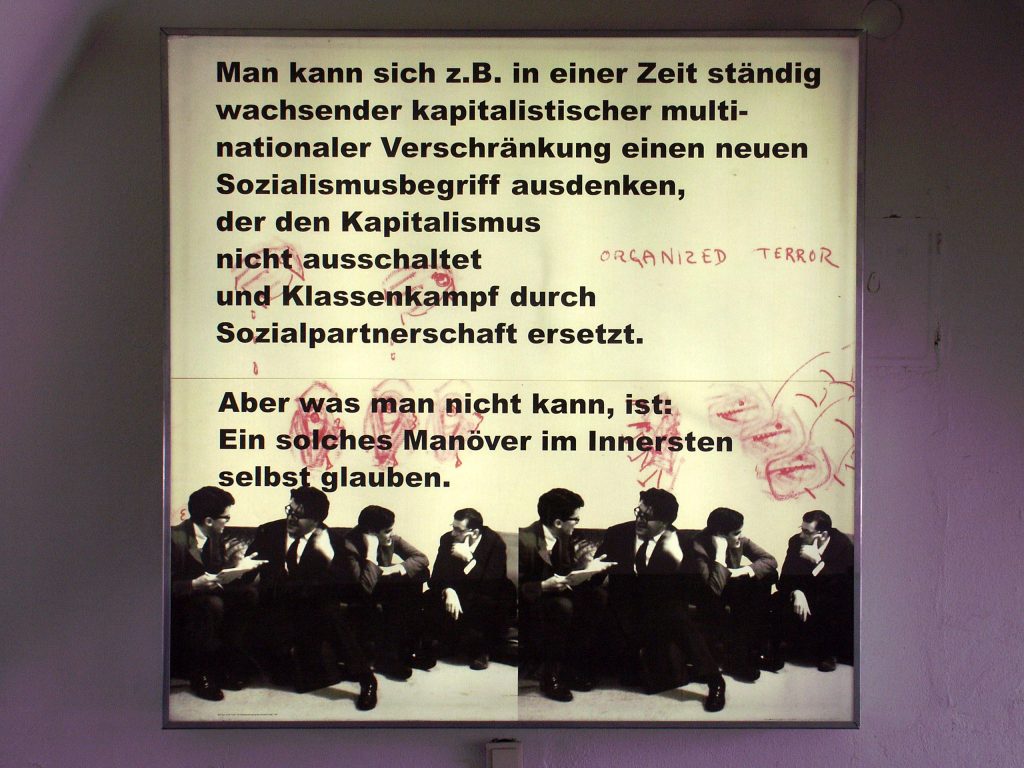A theme-specific permanent installation by Oliver Ressler
2002
After an invited competition, Oliver Ressler and Martin Schmidl were selected by the city of Kapfenberg (AT) to carry out two installations dedicated to the author Erich Fried (1921–1988). Fried’s political poems and love poems make him one of the most significant and active German speaking authors of his times.
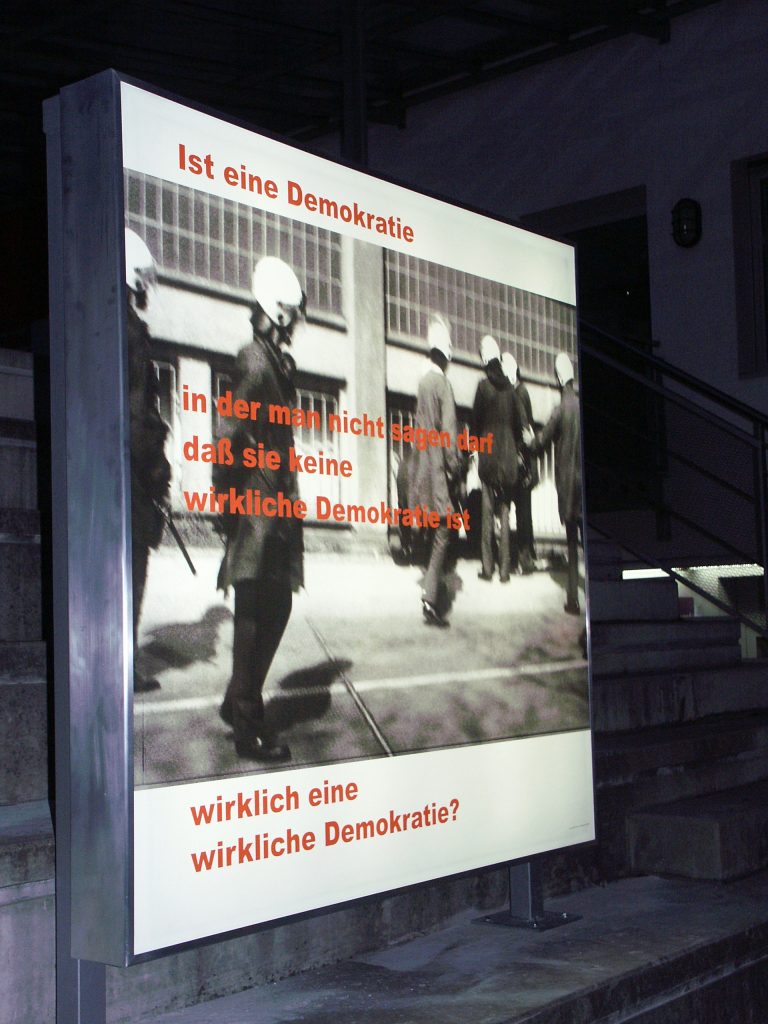
Oliver Ressler’s installation consists of two 1.5 x 1.5 m light boxes and a 46 m long floor text in the center of Kapfenberg. The text/image montages in the two light boxes combine thematic and associative text excerpts from Erich Fried’s literary work with photographs and a drawing from his estate. The selected texts are concerned with the capitalist system, possible alternatives, and with socialism and issues of democracy. This thematic concentration forms the connecting link between the political position and literature of Fried and the history and present life in the Upper Styrian industrial town of Kapfenberg. The light box, installed in the old town passageway directly adjacent to the main square that was named for the resistance fighter Koloman Wallisch focusses on Fried’s views of socialism and the worker’s struggle based on excerpts from the text “Die Arbeiterbewegung als kulturelle Kraft” (The labor movement as cultural power) from 1987. The text states:
“In an era of steadily growing multinational capitalist weavings, we can, for example, think of new concepts of socialism that don’t eliminate capitalism, that replace class struggle with social partnership. What we can’t do is believe in such a maneuver deep inside.”
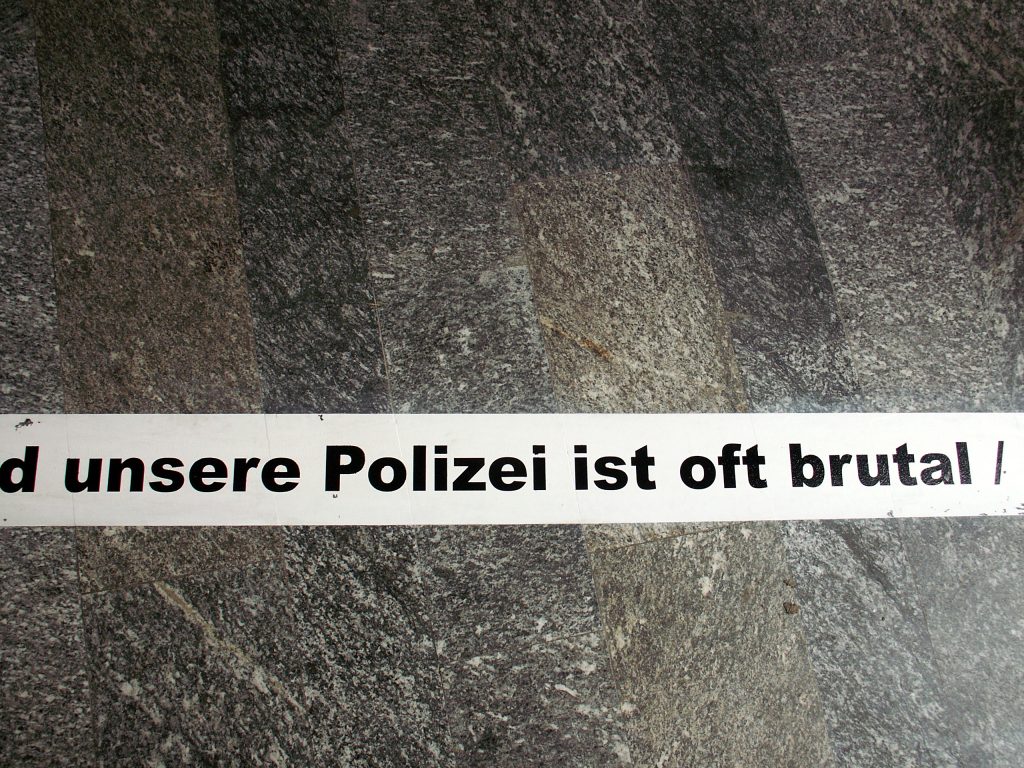
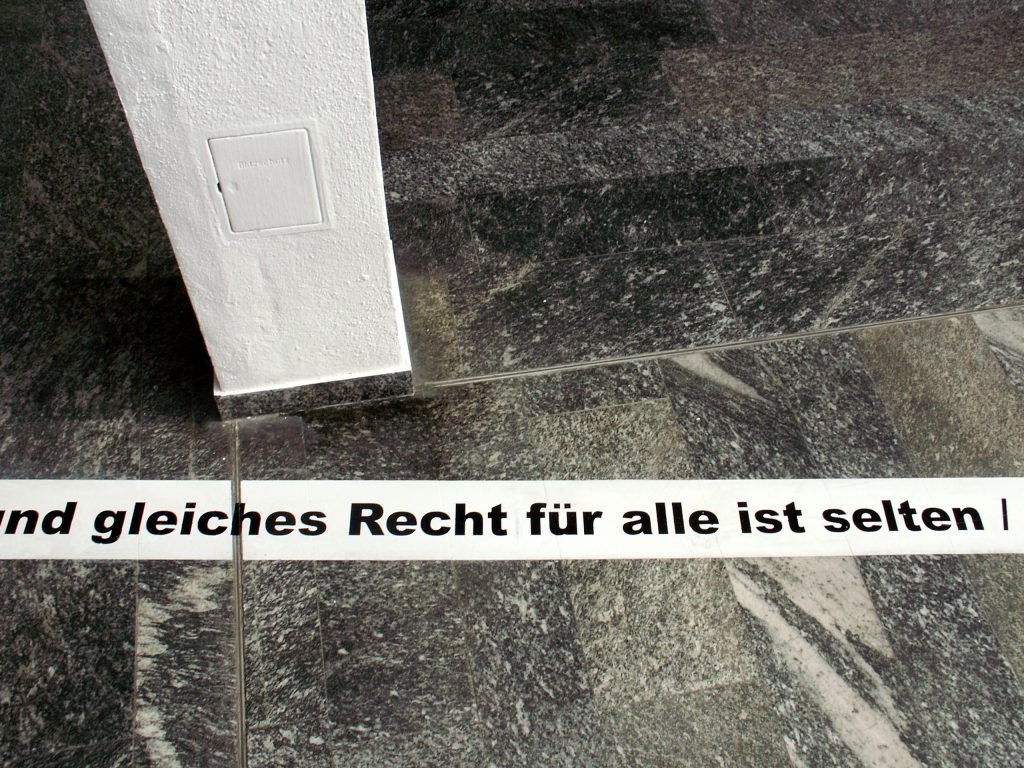
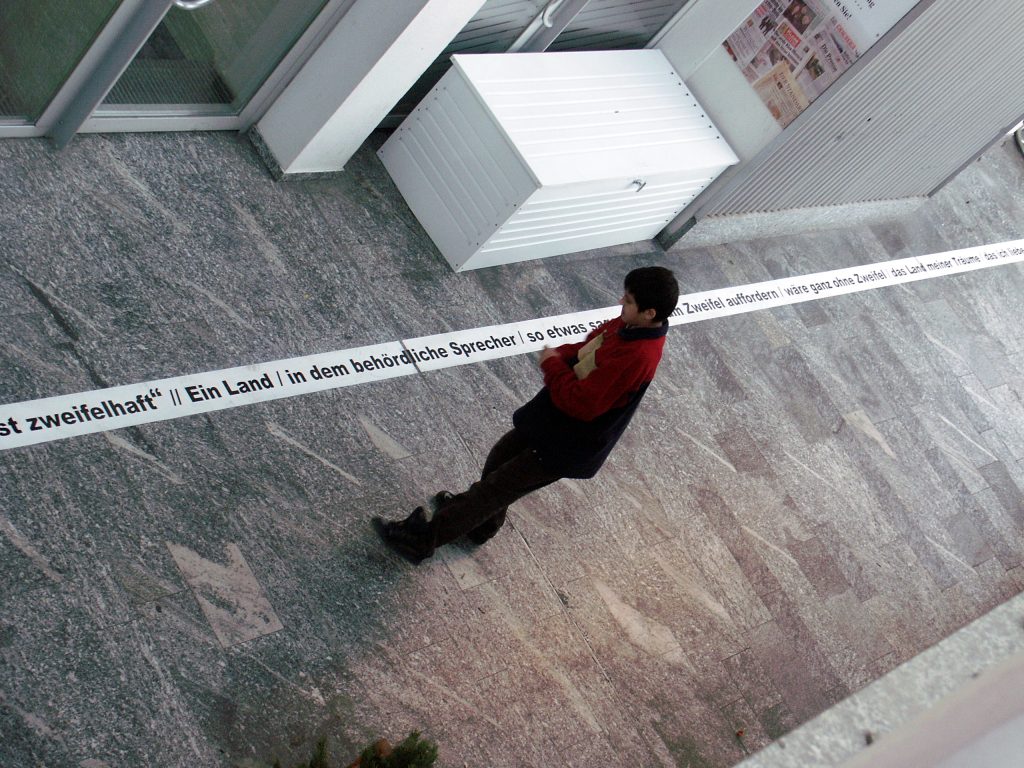
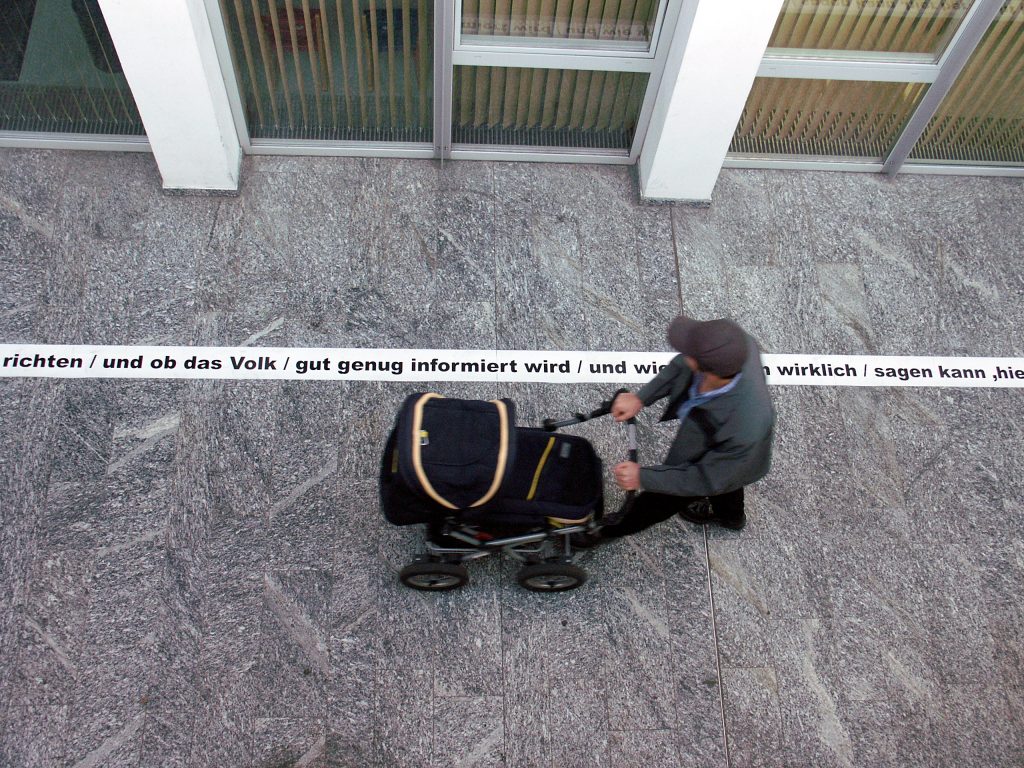
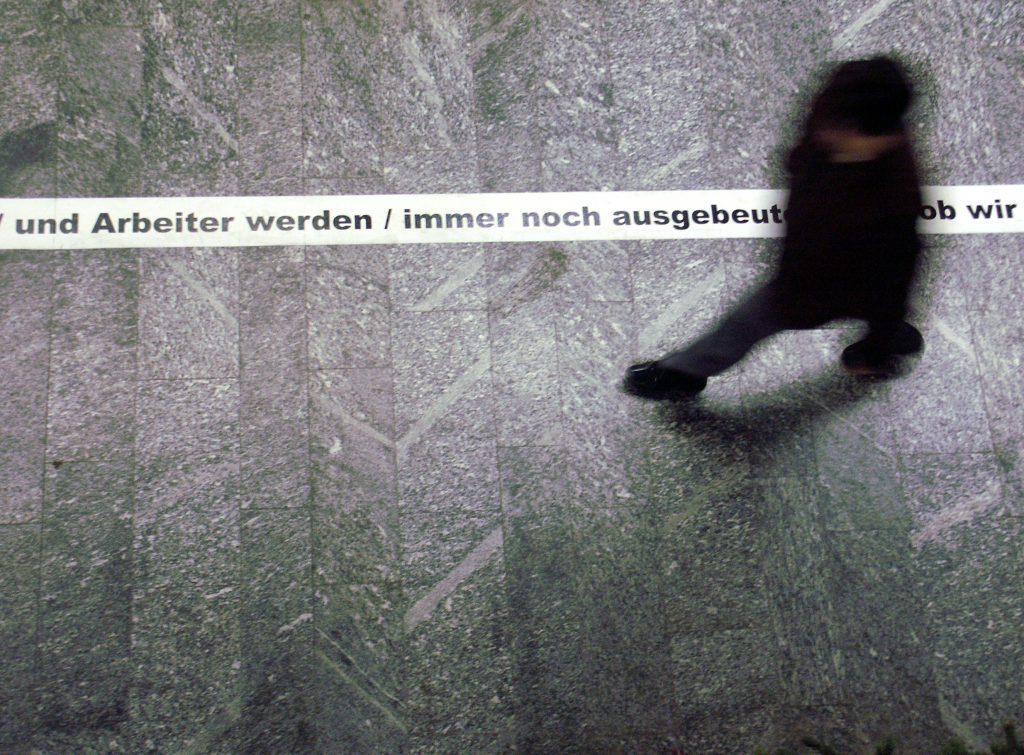
The light box as an advertising medium is a reference to the continued relevance of Fried’s persuasion. Proceeding from this light box, in the passageway where the entrances to the offices of Kapfenberg’s municipal authorities can be found, are the following texts from Erich Fried displayed in a 46 m long and 17 cm wide white and black floor graphic:
A land in which / official spokespersons declare: / ”our judges / say unjust things at times / and our police are often brutal / and equal rights for all are seldom / and besides that there are / political trials / and also a few other things / that are not so easy to justify / And some prisons / and mental hospitals and nursing homes / and hospitals and orphanages / and youth and old age homes / are not as good as they should be / and workers are / still being exploited / And it is doubtful that we always / judge according to the will of the people / and the people / are informed well enough / and it is really possible / to say ‘freedom reigns here’ // A land / in which official spokespersons / say things like that / and cast doubts / would undoubtedly / be the land of my dreams / that I love / and in which I want to live
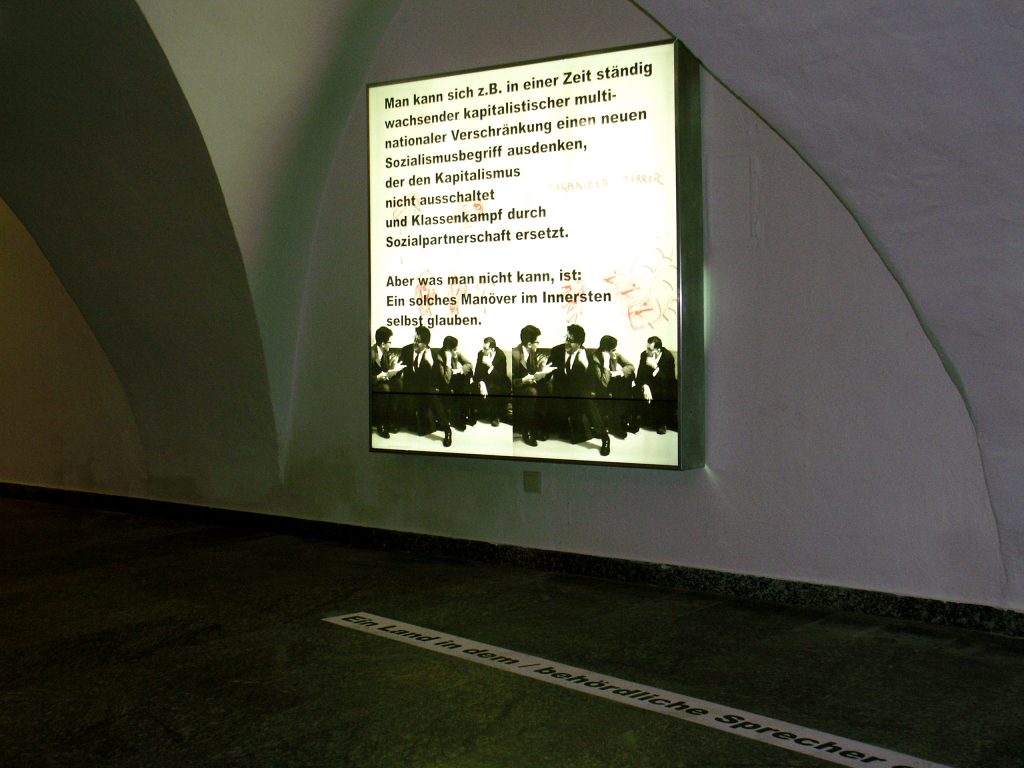
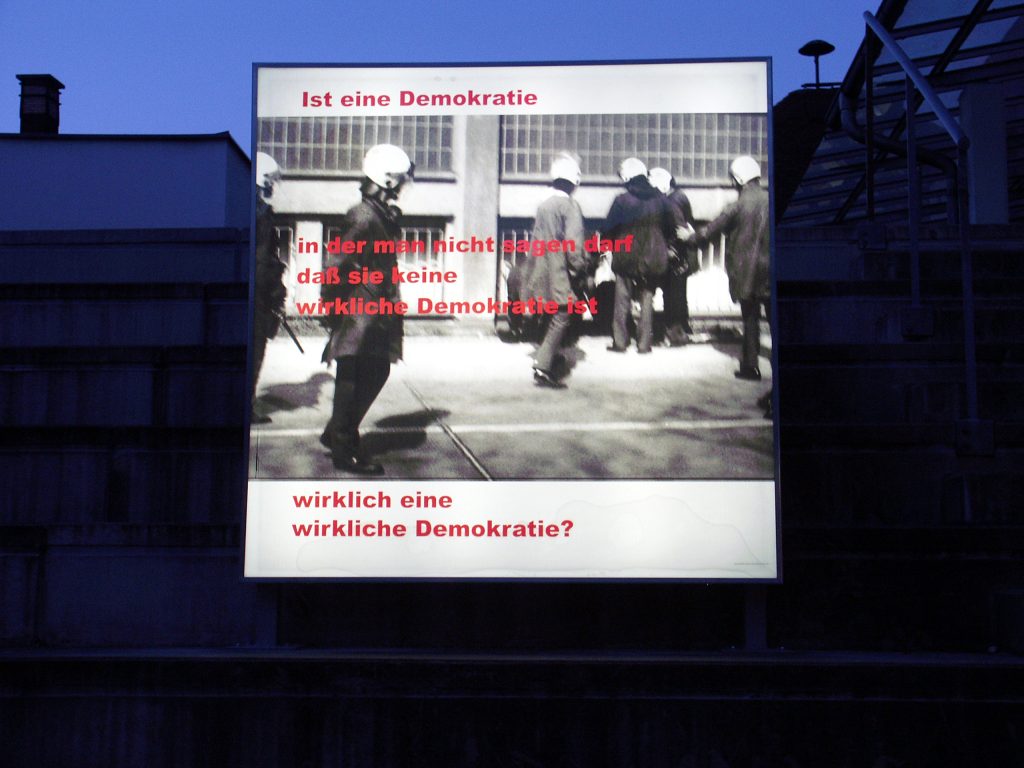
By following and reading the floor text on the ground, the second light box becomes visible in the new part of the passageway. Set above a photo that shows several police officers in helmets, who have obviously pushed a demonstrator to the ground, is an excerpt from Fried’s poem “Zur Kenntlichkeit” (On recognisability) from 1975–1977:
Is a democracy / where it is not permitted to say / that it is not / really a democracy / really a / real democracy?
The Erich Fried Passage at Koloman-Wallisch-Platz in Kapfenberg opened to the public on 20 November 2002.
